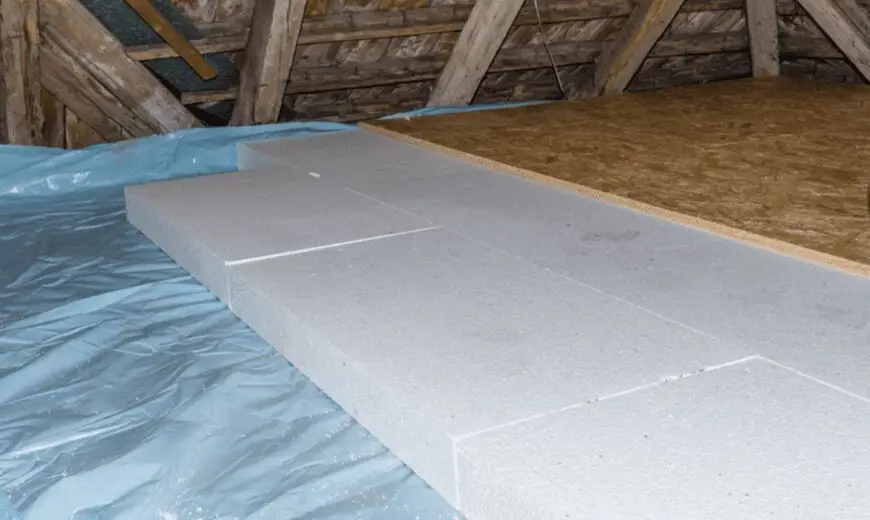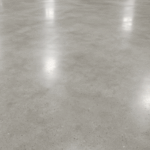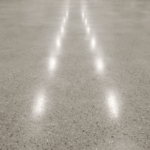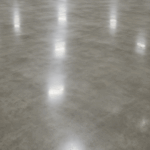Dämmung unter Estrich
- Home
- Dämmung unter Estrich
Dämmung unter Estrich: Fachwissen zu Materialien, Aufbau & GEG [2025]
Als Spezialisten für moderne Fußbodenaufbauten wissen wir: Die Dämmung unter Estrich ist eine entscheidende Komponente für Energieeffizienz, Komfort und Langlebigkeit. Eine korrekt geplante und verlegte Estrichdämmung beeinflusst maßgeblich den Wärmeschutz, Schallschutz und die Stabilität des gesamten Bodens. Erfahren Sie hier die wichtigsten Aspekte zur Fußbodendämmung unter Estrich, basierend auf unserer Expertise und den aktuellen Anforderungen (Stand 2025).
Kernfunktionen der Estrichdämmung
Eine professionelle Dämmung unter dem Estrich erfüllt mehrere zentrale Aufgaben im Bodenaufbau:
- Wärmedämmung & Energieeffizienz: Sie minimiert Wärmeverluste nach unten, senkt Heizkosten und trägt zur Einhaltung der strengen GEG-Anforderungen (Gebäudeenergiegesetz) bei. Eine gute Wärmedämmung des Estrichs sorgt für angenehme Fußbodentemperaturen.
- Trittschallschutz: Effektive Reduzierung von Gehgeräuschen gemäß DIN 4109. Eine gute Trittschalldämmung unter dem Estrich steigert den Wohnkomfort erheblich.
- Lastabtragung & Druckfestigkeit: Die Dämmschicht muss die Lasten von Estrich, Belag und Nutzung sicher aufnehmen. Die Wahl der richtigen Druckfestigkeit der Dämmung (z.B. druckfeste Dämmung für Wohnbereich oder höhere Lasten) ist entscheidend, um Setzungen zu vermeiden.
- Feuchteschutz: Gerade bei Dämmung auf Bodenplatte oder über Kellern schützt eine korrekt ausgeführte Schicht (oft mit Feuchtigkeitssperre Estrich) die Bausubstanz.
Dämmstoffe für Estrichdämmung
Die Auswahl des optimalen Dämmstoffs unter Estrich hängt von den Projektanforderungen ab: U-Wert, Aufbauhöhe der Dämmung, Drucklast, Schallschutz und Feuchte. Eine pauschale Empfehlung gibt es nicht; die geeignete Dämmung muss individuell bestimmt werden. Wichtige Kennwerte sind der Lambda-Wert (λ) und die Druckfestigkeit (kPa).
(Die Tabelle bleibt ein wertvolles Element für den Nutzer)
| Dämmstoff | Lambda-Wert (λ) [W/(m·K)] (ca.) | Druckfestigkeit¹ [kPa] | Brandverhalten (Euroklasse) | Typ. Anwendungshinweis für unter Estrich |
|---|---|---|---|---|
| EPS (Expandiertes Polystyrol) | 0.032 – 0.040 | 100 – 200 (DEO/DES) | E | Standard EPS unter Estrich, kosteneffizient, gute Wärmedämmung |
| XPS (Extrudiertes Polystyrol) | 0.030 – 0.038 | ≥ 300 | E | XPS unter Estrich bei hoher Drucklast & Feuchte (Keller, Bodenplatte) |
| PUR/PIR (Polyurethan/Polyisocyanurat) | 0.022 – 0.028 | ≥ 120 | E (oft B2) | PUR Dämmung Estrich für sehr gute Dämmung bei geringer Aufbauhöhe |
| Mineralwolle (Stein-/Glaswolle) | 0.035 – 0.040 | ca. 5 – 20 kPa (als Trittschallplatte s’)² | A1 (nicht brennbar) | Mineralwolle Estrichdämmung für exzellenten Trittschallschutz, nicht brennbar |
| Holzweichfaser | 0.040 – 0.050 | ca. 50 – 150 | E | Ökologische Alternative, guter Schall- & Wärmeschutz |
| Schaumglas | 0.038 – 0.050 | ≥ 500 | A1 (nicht brennbar) | Sehr hohe Drucklast, dampfdicht, bei speziellen Anforderungen |
¹ Druckspannung bei 10% Stauchung (CS(10)-Wert) oder zulässige Dauerdruckspannung beachten. Mindestdruckfestigkeit Estrichdämmung je nach Last planen! ² Fokus liegt hier auf geringer dynamischer Steifigkeit (s’) für Trittschall.

Kennwerte der Estrichdämmung verstehen: U-Wert, Druck & Schall
Für die Planung sind folgende Kennwerte der Dämmung unter Estrich relevant:
- λ-Wert: Materialeigenschaft (niedriger = besser dämmend).
- U-Wert: Wärmedurchgang des gesamten Bauteils (niedriger = besser). Die U-Wert Berechnung für Fußböden muss die Mindestanforderungen des GEG erfüllen. Die Dicke der Estrichdämmung ist hier maßgebend.
- Druckfestigkeit (kPa): Wichtig gegen Setzungen. Falsche Wahl führt zu Schäden.
- Dynamische Steifigkeit (s’ in MN/m³): Maß für die Trittschallverbesserung (niedriger = besser).
- Brandverhalten: Klassifizierung nach Euroklassen (A1-F).
4. Abstimmung auf den Estrich: Zementestrich, Anhydrit & Co.
Die Art des schwimmenden Estrichs (z.B. Zementestrich, Anhydritestrich/Calciumsulfatestrich, Fließestrich) beeinflusst die Anforderungen an die Trennlage und den Bauablauf.
Fachgerechte Verlegung der Dämmung unter Estrich
Die Qualität der Verlegung der Estrichdämmung ist entscheidend. Wichtige Schritte:
- Ebenen, sauberen Untergrund schaffen.
- Abdichtung Bodenplatte oder Kellerdecke (z.B. Bitumenbahn, Kaltschweißbahn) fachgerecht verlegen.
- Randdämmstreifen korrekt anbringen – lückenlos an allen Wänden und Stützen.
- Dämmplatten lückenlos und im Verband verlegen. Bei mehrlagiger Dämmung Fugen versetzen.
- Trennlage (meist PE-Folie) sorgfältig ausbreiten.
- Bei Bedarf Fußbodenheizung auf Dämmung installieren.
- Estrich einbringen.
Fehler vermeiden bei der Estrichdämmung: Planungshinweise
Häufige Fehlerquellen sind mangelnde Planung der Druckfestigkeit, unzureichende Feuchtigkeitssperren, fehlerhafte Randdämmstreifen (Schallbrücken!) oder offene Fugen. Eine detaillierte Planung der Fußbodendämmung ist essenziell, um Setzungen zu vermeiden und Feuchteschäden vorzubeugen.
Kosten der Dämmung unter Estrich: Was kostet Estrichdämmung pro m²?
Die Preise für Estrichdämmung pro m² variieren stark nach Material (EPS, XPS, PUR etc.), Dicke und Druckfestigkeit. Rechnen Sie mit Materialkosten von ca. 5 €/m² (für einfaches EPS) bis über 30 €/m² (für Hochleistungs-PUR/PIR oder Schaumglas). Entscheidend ist das Preis-Leistungs-Verhältnis im Hinblick auf die technischen Anforderungen und die Langlebigkeit.
Fazit: Warum die korrekte Dämmung unter Estrich so wichtig ist
Die Dämmung unter Estrich ist eine Investition in die Zukunft Ihrer Immobilie. Sie sichert Energieeinsparung, hohen Wohnkomfort durch Wärme- und Trittschallschutz und schützt die Bausubstanz. Die langfristige Funktion hängt maßgeblich von der richtigen Materialwahl und der fachgerechten Ausführung ab. Setzen Sie auf Qualität und Expertise, um kostspielige Folgeschäden zu vermeiden – die Beauftragung eines erfahrenen Fachbetriebs für Estrich- und Dämmarbeiten zahlt sich aus.
Häufig gestellte Fragen (FAQ)
Nein. Eine effektive Trittschalldämmung erfordert eine geringe dynamische Steifigkeit (s') des Materials. Standard-Wärmedämmplatten (z.B. EPS DEO, XPS, viele PUR/PIR) sind dafür oft zu steif. Nur spezielle Produkte (z.B. EPS-T, MW-T, Holzfaser-TSD), die die Anforderungen an DES erfüllen, bieten beides.
Die Mindestanforderungen an den Luft- und Trittschallschutz im Hochbau sind in der DIN 4109 festgelegt. Oft werden jedoch vertraglich oder aufgrund von Komfortwünschen höhere Schallschutzstandards vereinbart.
Tendenziell ja, da die für den Schallschutz nötige Elastizität einer sehr hohen Druckfestigkeit entgegenwirkt. Es gibt jedoch Trittschalldämmplatten in verschiedenen Druckbelastbarkeits- bzw. Zusammendrückbarkeitsklassen (z.B. DES-sg, -sm, -sh), sodass auch für höhere Lasten geeignete Produkte verfügbar sind. Die Auswahl muss zur Nutzung passen!
Sie ergibt sich aus dem geforderten U-Wert (Wärmedurchgangskoeffizient) für das Bauteil (gemäß GEG oder spezifischer Planung) und dem Lambda-Wert (λ) (Wärmeleitfähigkeit) des gewählten Dämmstoffs. Formel vereinfacht: Dicke ≈ Lambda / U-Wert.
Sie entkoppeln den schwimmenden Estrich von den flankierenden Wänden und verhindern so, dass der Trittschall direkt als Körperschall in die Wände übertragen wird (Schallbrücken). Ohne korrekt verlegte Randdämmstreifen ist die Wirkung der Trittschalldämmplatte stark reduziert.



